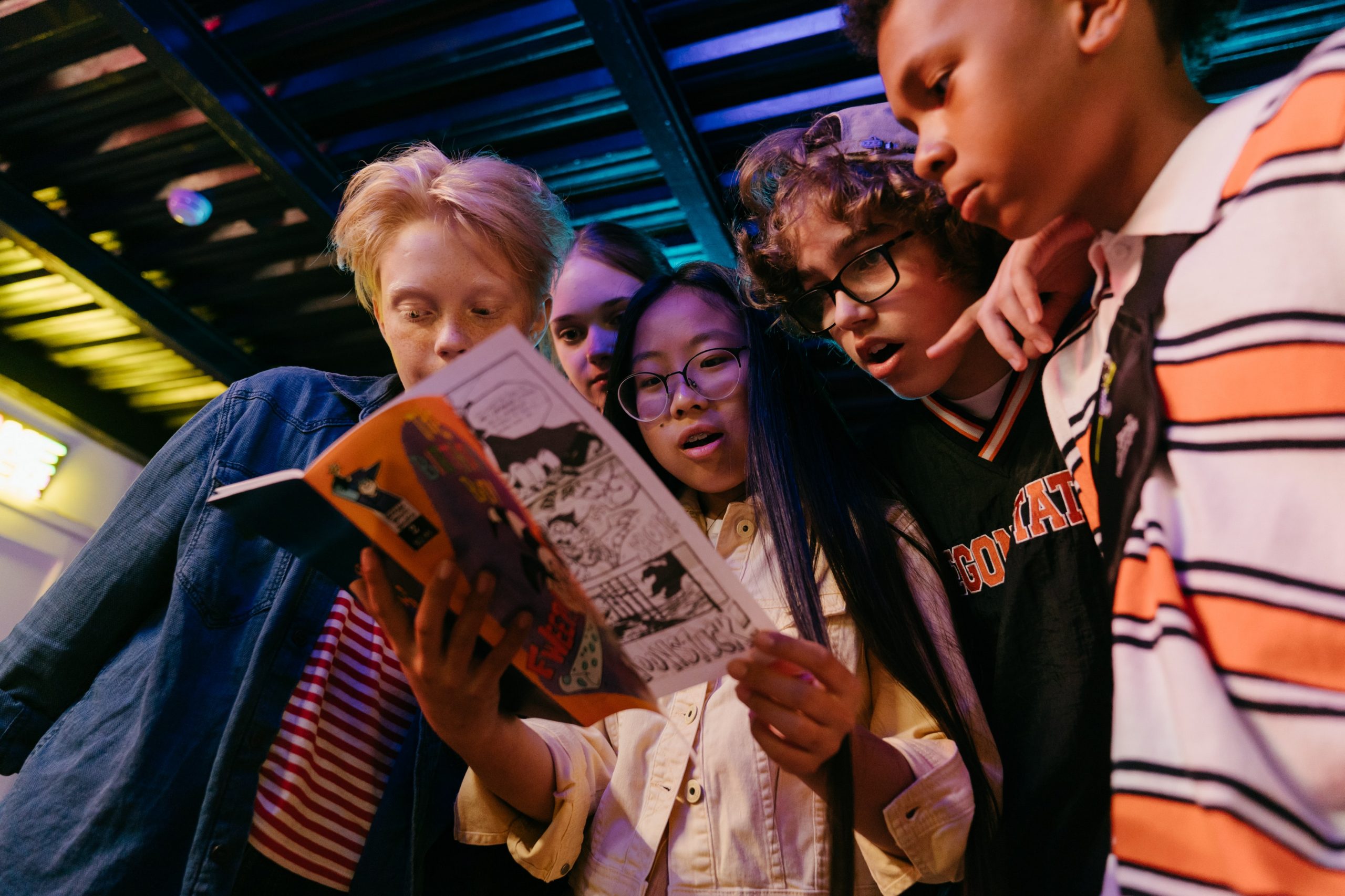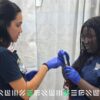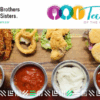
Our work at Big Brothers Big Sisters of Tampa Bay improves lives and helps connect our wonderfully diverse communities to one another. Part of building that understanding is helping our children process their feelings in the wake of injustice, such as the recent attacks on Asian and Pacific Islander Americans in Atlanta and across the nation as COVID-19 rocked our communities. Many kids are feeling anxious, confused, or scared and have questions about what is happening across the country and in the local Tampa Bay community. Discussions about race and racism can be difficult, but checking in with your Little in the wake of racist violence is crucial. Talking with a trusted adult and finding ways to take positive action is important for children. Big Brothers Big Sisters of Tampa Bay collected some resources for our Bigs, Littles, and families to have open discussions about racism, diversity, and social justice.
- Social Justice Books for Kids – A selection of multicultural and social justice books for children, young adults, and educators from the Teaching For Change Project.
- Guide for Parents of Asian/Asian American Adolescents – How to Talk About Anti-Asian Racism With Your Child: Brutal attacks, hateful language, and total avoidance—the COVID-19 pandemic has fueled intense racism against Asian Americans. There have been more than 3,700 hate incidents against Asian Americans between March 19, 2020 and February 28, 2021 reported to Stop AAPI Hate, a national coalition launched in March 2020 to report on anti-Asian American discrimination during the pandemic. This is a sharp increase from the previously reported 2,500+ incidents between mid-March and early August 2020. Experts suggest starting the conversation in a place where it can happen more naturally like in the car, while eating together, or during shared activities. Ask questions like, “Do you feel safe going back to school? What will help make you feel safe?” and “Do you worry about being looked at differently because you’re Asian?” Use age-appropriate language but be direct; don’t expect kids to “read between the lines.”
- Talking to Kids About Racism and Violence – How to Talk About Anti-Asian Racism With Your Little: How can parents and mentors, many of whom are struggling themselves, help kids process what they’re seeing and manage their feelings? There’s no single correct answer. That said, there are a few guidelines parents can keep in mind to help kids deal with troubling news about racism and violence. Do your best to meet your child or Little where they are and acknowledge their feelings, fears and worries, even if they express things that make you uncomfortable. It’s also important to assure kids that you’re doing everything you can to keep them safe. This is especially true for very young children, who may mistakenly believe that whatever they’re hearing about is an immediate danger to them and their loved ones.
- Anti-Asian Racism Webinar – Understanding the Historical Context of Anti-Asian Racism in America: This webinar from the MGH Health Institute broadly explores racism in our country (such as the Chinese Exclusion Act) and how the experiences of Asian-Americans are not monolithic.
- National Association of School Psychologists – Supporting Vulnerable Students in Stressful Times: Tips for Parents: The current climate of divisiveness, anger and fear in this country is having a significant impact on many children and adults. Feelings of uncertainty are particularly heightened for communities and families struggling to understand and cope with hate-based violence, discriminatory or threatening actions or speech, and shifting policies that are causing new uncertainties for specific populations. This is a crucial time for families and schools to work together to foster supportive relationships, to help children understand their emotional reactions, and to teach effective coping and conflict resolution strategies. The tips and related resources in this document are intended to help you support your children.
- National Association of School Psychologists – Understanding Race and Privilege: Across the nation, children of all backgrounds are experiencing a time in which discussions about race, gender, gender identity, sexual orientation, religion, and culture are at the forefront of their everyday lives. Many people avoid these discussions because they fear that conversations about race, bias, and racism lead to feelings of anger, guilt, discomfort, sadness, and at times disrespect. The current state of our Union, however, no longer allows for these tough conversations to be ignored. While uncomfortable for some, school psychologists are in a position to lead or at least participate in these conversations. By using their knowledge and expertise of systems-level change, school psychologists can facilitate the dialogue to bring about positive, productive outcomes
- Racial Equity Tools is designed to support individuals and groups working to achieve racial equity. This site offers tools, research, tips, curricula and ideas for people who want to increase their own understanding and to help those working toward justice at every level – in systems, organizations, communities and the culture at large.
- Girl Scouts – Help Your Kids Take Action Against Racism: Whenever we see injustice, we all have a responsibility to confront it. Every day, no matter our background or our age, every single one of us has a role to play in taking on an unfair system while working to build a new one that truly works for all. Guiding our girls in learning to recognize and challenge structures and practices that fuel inequality and cause harm helps them play an active role in creating the positive change our society needs.
- Glazer Children’s Museum – Social Justice: We have created a page on our website filled with free resources for families about racism, trauma, violence, and the historic context of activism. This is just our small piece of the puzzle. To the black and brown families in our community – we are here for you. We will help you help your children through this.
- Edutopia – Teaching Young Children About Bias, Diversity, and Social Justice: As a society and within our educational institutions, discussions about bias, diversity, discrimination, and social justice tend to happen in middle and high schools. We’ve somehow decided that little kids can’t understand these complex topics, or we want to delay exposing them to injustices as long as possible (even though not all children have the luxury of being shielded from injustice). However, young children have a keen awareness of and passion for fairness. They demand right over wrong, just over unjust. And they notice differences without apology or discomfort.
- Mentor.org – Supporting Young People in the Wake of Violence and Trauma: Episodes of violence and trauma in young people’s communities, especially those that arise from a place of systemic inequality, prejudice and racism, impact young people’s lives in a variety of ways. Mentors are uniquely positioned to help young people process these experiences by providing a space to express their emotions, ask for help, and channel uncertain feelings into positive, constructive action. However, mentors may need strategies for supporting these discussions and actions as well as support for being allies to young people trying to make sense of their feelings. For example, in the aftermath of tragic incidents of racial profiling and violence resulting from police actions, young people may feel unsafe, angry, frustrated, sad, and powerless. This guide was developed to help mentors build relationships with young people that affirm their experiences and cultivate a sense of safety after incidents of violence or traumatic events occur.
- Child Mind Institute – A Clinical Perspective on Talking to Kids About Racism: As the nation mourns the deaths of George Floyd, Breonna Taylor and other black Americans, discussions of racism and violence dominate the national conversation as well as the conversations we’re having at home. Talking to kids about racism and racialized violence is hard, but it’s also necessary — today and as kids grow up. Below, advice for parents on this topic from two of the Child Mind Institute’s expert clinicians.
- Child Mind Institute – Racism and Violence: How to Help Kids Handle the News: With protests over the violent deaths of black Americans dominating the news, it’s understandable that many kids are feeling scared, confused or angry about the situation. How can parents, many of whom are struggling themselves, help children process what they’re seeing and manage their feelings? There’s no one right answer. That said, there are a few guidelines parents can keep in mind to help kids deal with troubling news about race and violence.
- Nia House Learning Center – 40+ Children’s Books about Human Rights & Social Justice: Young people have an innate sense of right and wrong, fair and unfair. Explaining the basics of human rights in age-appropriate ways with stories and examples can set the foundation for a lifelong commitment to social responsibility and global citizenship. As a parent to a preschooler and a professor of peace and human rights education, here are my top picks for children’s books that discuss important issues—and that are visually beautiful. Some of the books listed offer an overview of rights; the majority show individuals and organizations past and present who have struggled to overcome injustices. All offer different levels of child-friendly images, concepts and text.
- Embrace Race: As US racial divisions and inequities grow sharper and more painful, the work of envisioning and creating systems of authentic racial inclusion and belonging in the United States remains work in progress. We believe that reversing the trend must begin in our homes, schools, and communities with our children’s hearts and minds.
- Greater Good Magazine – Anti-Racist Resources from Greater Good: Our mission at the Greater Good Science Center is to elevate the human potential for compassion. But that does not mean we deny or dismiss the human potential for violence, particularly toward marginalized or dehumanized groups.
- Community Tampa Bay – Virtual Programs Let’s Talk About Race: We at Community Tampa Bay asked ourselves what can we contribute during this difficult time? Perhaps we could engage folks in examining the impact, causes, and consequences of prejudice and discriminatory systems as it relates to individual and community health? Perhaps we could promote reflection on the intersections of our own and each others’ social identities as we navigate this experience? Or perhaps we could do all of the above while prioritizing what we do best – having fun, sharing laughter and building community! Join us for our various virtual programs.
- Undoing Racism The People’s Institute for Survival and Beyond: The People’s Institute for Survival and Beyond (PISAB) focuses on understanding what racism is, where it comes from, how it functions, why it persists and how it can be undone. Our workshops utilize a systemic approach that emphasizes learning from history, developing leadership, maintaining accountability to communities, creating networks, undoing internalized racial oppression and understanding the role of organizational gatekeeping as a mechanism for perpetuating racism.
- Showing Up for Racial Justice: Political education is the collective process of study, research, analysis, and storytelling that helps us understand our situation and what we’re up against and what we can do about it. The purpose of political education is to build a shared language about our situation, a shared framework for understanding our situation, and a shared understanding of our history so we can better understand how we got here and what we can learn from those who went before us. We engage in political education to sharpen our skills in taking action for movement building for solidarity and social justice.
- The Conscious Kid: The Conscious Kid is an education, research and policy organization dedicated to reducing bias and promoting positive identity development in youth. We partner with organizations, children’s museums, schools, and families across the country to promote access to children’s books centering on underrepresented and oppressed groups.
- Big Brothers Big Sisters of Kentuckiana Race/Ethnicity/Culture Toolkit for Bigs: What should I tell my Little about police brutality, protests, and/or race relations? First, assess how your Little is feeling and reacting to events in the area. Your Little may just be focused on playing basketball or otherwise distracted and seem uninterested or averse to talking about recent racial events. That is okay. This could be their version of self-care. Do not feel the need to force the issue. They may not be ready to talk.
- Racial Trauma in Film: How Viewers Can Address Re-traumatization: When you are watching a movie or a show, your brain thinks the action on screen is happening to you. This is why you have to consciously tell your brain, “It is just a movie.” Our mirror neurons are part of the reason we cry during a sad part of a movie, laugh at jokes, and jump at a scary scene (Zacks, 2015). Our emotions are deeply impacted by watching film and media content. This raises the question: “What happens if we watch content that we have already experienced ourselves and was traumatizing in our real, present-day life?”
- Confronting Prejudice: How to Protect Yourself and Help Others: Dealing with prejudice—whether it’s microaggressions, bias, or discrimination—is physically and psychologically demanding. But avoiding it is not always an option. “Not everyone has the luxury of leaving a prejudicial workplace or neighborhood,” said Natasha Thapar-Olmos, Ph.D., Program Director at OnlinePsychology@Pepperdine, the online Master of Arts in Psychology at Pepperdine University’s Graduate School of Education and Psychology. External link “But there might be things we can do and some tools to cope.” What are those tools? Use this guide to understand where prejudice comes from, what it looks like, and how you can help others experiencing it.
- Mental Health Resources for Youth People of Color: Young people of color are resilient. But being a young person of color in America today can mean consistent exposure to traumatic incidents directed at their communities, whether in person, on television or through social media. While awareness can spur action that results in change, it can also take an emotional toll on young people that can impact other facets of their lives like schooling and relationships. Maintaining mental health is important and seeking help can be necessary to stay healthy. In this article, OnlineCounselingPrograms.com has assembled a variety of mental health-focused content and resources to support young people of color.






